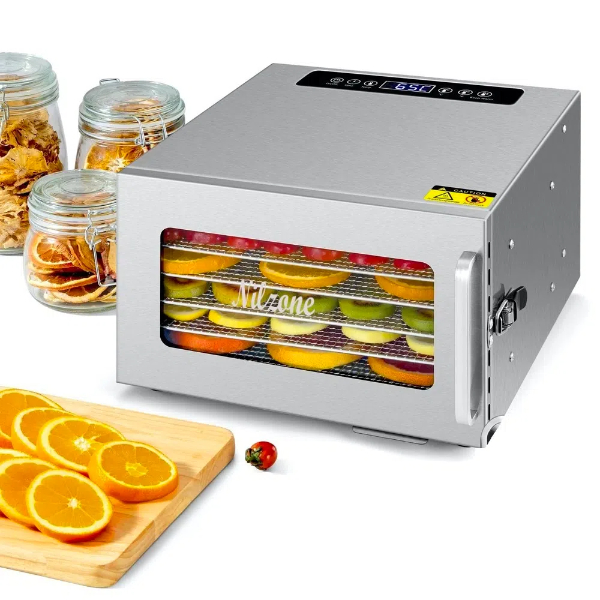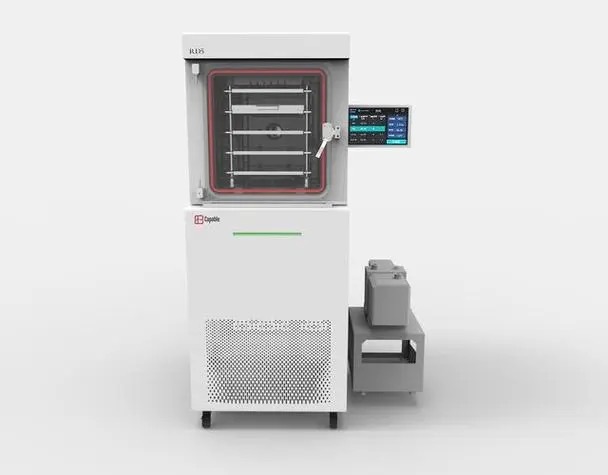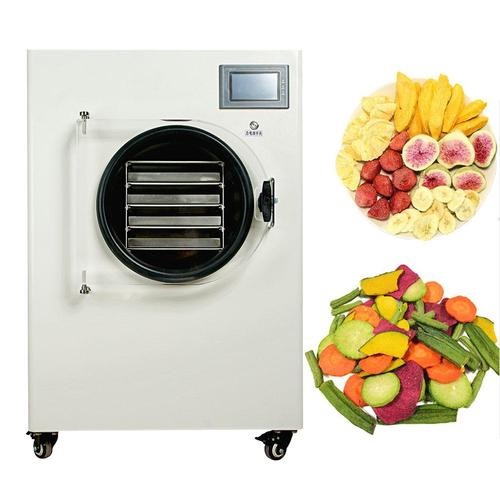
Content Menu
● Introduction to Food Dehydration
● Understanding Food Dry Machines
>> Types of Food Dry Machines
● Benefits of Using a Food Dry Machine
>> 1. Extended Shelf Life
>> 2. Preservation of Nutrients
>> 3. Enhanced Flavors
>> 4. Space-Saving Food Storage
>> 5. Cost-Effective
● Popular Applications of Food Dry Machines
>> Fruit Dryer Machine: Preserving Nature's Sweetness
>> Vegetable Dehydration Machine: Locking in Nutrients
>> Meat Drying Machine: Crafting Artisanal Jerky
>> Herb and Spice Drying
● Choosing the Right Food Dry Machine
● Tips for Using Your Food Dry Machine Effectively
● Industrial Applications of Food Drying Systems
>> Commercial Food Dehydrator: Scaling Up Production
>> Multi-Layer Food Drying Machine: Maximizing Efficiency
>> Energy-Efficient Food Dryers: Sustainable Solutions
● The Future of Food Drying Technology
● Conclusion
● Frequently Asked Questions
>> Q1: What types of food can I dehydrate in a food dry machine?
>> Q2: How long does the food drying process typically take?
>> Q3: Are food dry machines energy-efficient?
>> Q4: How do I clean and maintain my food dry machine?
>> Q5: Can I use a food dry machine for purposes other than food dehydration?
Introduction to Food Dehydration
Food dehydration is an ancient preservation technique that has evolved significantly with modern technology. Today, food dry machines, also known as food dehydrators, have become increasingly popular among health-conscious consumers, culinary enthusiasts, and food industry professionals. These innovative devices offer a convenient and efficient way to preserve a wide variety of foods while maintaining their nutritional value and enhancing their flavors.
Understanding Food Dry Machines
A food dry machine, or food dehydrator, is an appliance designed to remove moisture from food items, effectively preserving them for extended periods. These machines work by circulating warm air around the food, gradually evaporating the water content while retaining the food's essential nutrients and flavors.
Types of Food Dry Machines
1. Home Food Drying Equipment: These compact units are perfect for individual use or small families. They typically feature multiple trays and adjustable temperature settings.
2. Commercial Food Dehydrators: Designed for larger-scale operations, these machines offer higher capacity and more advanced features for consistent results.
3. Industrial Food Drying Systems: These large-scale systems are used in food processing plants and can handle massive quantities of food for commercial production.
4. Freeze-Drying Technology: While not a traditional dehydration method, freeze-drying is an advanced technique that preserves food by removing water through sublimation.

Benefits of Using a Food Dry Machine
1. Extended Shelf Life
By removing moisture, food dry machines significantly extend the shelf life of various foods. Properly dehydrated fruits, vegetables, and meats can last for months or even years when stored correctly.
2. Preservation of Nutrients
Unlike some preservation methods that can degrade nutritional content, food dehydration retains most of the food's original nutrients, making it an excellent option for health-conscious individuals.
3. Enhanced Flavors
Dehydration concentrates the natural flavors of foods, often resulting in more intense and delicious taste profiles. This is particularly noticeable in fruits and herbs.
4. Space-Saving Food Storage
Dried foods take up significantly less space than their fresh counterparts, making them ideal for compact storage and transportation.
5. Cost-Effective
By allowing you to buy seasonal produce in bulk and preserve it for later use, food dry machines can help reduce food waste and save money in the long run.
Popular Applications of Food Dry Machines
Fruit Dryer Machine: Preserving Nature's Sweetness
Fruit dehydration is one of the most common applications of food dry machines. From apples and bananas to exotic fruits like mangoes and kiwis, a fruit dryer machine can transform fresh produce into delicious, long-lasting snacks.
Vegetable Dehydration Machine: Locking in Nutrients
Vegetables are excellent candidates for dehydration. A vegetable dehydration machine can preserve a wide range of produce, from leafy greens to root vegetables, allowing you to enjoy their nutritional benefits year-round.
Meat Drying Machine: Crafting Artisanal Jerky
For meat lovers, a meat drying machine opens up a world of possibilities. Create your own beef jerky, dried fish, or other preserved meats with precise control over flavors and textures.
Herb and Spice Drying
Food dry machines are perfect for preserving fresh herbs and spices, allowing you to capture their aromatic compounds at their peak.
Choosing the Right Food Dry Machine
When selecting a food dry machine, consider the following factors:
1. Capacity: Determine how much food you plan to dehydrate regularly.
2. Temperature Control: Look for models with adjustable temperature settings for versatility.
3. Air Flow: Efficient air circulation ensures even drying across all trays.
4. Noise Level: Some machines can be noisy, so consider this if you plan to run it overnight.
5. Energy Efficiency: Energy-efficient food dryers can help reduce operating costs.

Tips for Using Your Food Dry Machine Effectively
1. Prepare foods uniformly: Cut fruits and vegetables into even pieces for consistent drying.
2. Arrange foods properly: Leave space between items on trays for optimal air circulation.
3. Rotate trays: For even drying, rotate tray positions periodically during the process.
4. Store dried foods correctly: Use airtight containers or vacuum-sealed bags to maintain freshness.
5. Experiment with flavors: Try adding spices or marinades before drying to create unique taste profiles.
Industrial Applications of Food Drying Systems
In the commercial sector, industrial food drying systems play a crucial role in large-scale food production and preservation. These sophisticated machines are designed to handle high volumes of food while maintaining consistent quality and safety standards.
Commercial Food Dehydrator: Scaling Up Production
Commercial food dehydrators are essential in many food processing facilities. They can handle large batches of fruits, vegetables, meats, and other food products, making them ideal for producing dried ingredients for the food industry.
Multi-Layer Food Drying Machine: Maximizing Efficiency
Multi-layer food drying machines are designed to optimize space and energy use. These systems can process multiple types of food simultaneously, increasing productivity and reducing operational costs.
Energy-Efficient Food Dryers: Sustainable Solutions
As sustainability becomes increasingly important in the food industry, energy-efficient food dryers are gaining popularity. These systems use advanced technologies to minimize energy consumption while maintaining high-quality output.
The Future of Food Drying Technology
The field of food drying technology continues to evolve, with new innovations emerging to meet the changing needs of consumers and the food industry. Some exciting developments include:
1. Smart Food Dehydrators: Internet-connected devices that allow remote monitoring and control of the drying process.
2. Hybrid Drying Systems: Combining multiple drying technologies for optimal results with different food types.
3. Eco-Friendly Materials: Development of more sustainable materials for food dry machine construction.
4. Improved Sensor Technology: Advanced sensors for more precise temperature and humidity control during the drying process.
5. Artificial Intelligence Integration: AI-powered systems that can optimize drying parameters based on the specific characteristics of each food item.
Conclusion
Food dry machines have revolutionized the way we preserve and enjoy food. From home kitchens to large-scale industrial operations, these versatile devices offer numerous benefits, including extended shelf life, preserved nutrients, and enhanced flavors. As technology continues to advance, we can expect even more innovative solutions in the world of food dehydration, further improving the efficiency, sustainability, and quality of dried food products.
Whether you're a health-conscious consumer looking to make your own preservative-free snacks or a food industry professional seeking to optimize your production processes, food dry machines offer a world of possibilities. By understanding the different types of food dehydrators available and learning how to use them effectively, you can unlock the full potential of this time-tested preservation method and enjoy the benefits of dried foods in your daily life.

Frequently Asked Questions
Q1: What types of food can I dehydrate in a food dry machine?
A1: Food dry machines are incredibly versatile and can be used to dehydrate a wide variety of foods, including:
- Fruits (apples, bananas, berries, mangoes, etc.)
- Vegetables (carrots, bell peppers, onions, tomatoes, etc.)
- Meats (beef, chicken, fish for jerky)
- Herbs and spices
- Nuts and seeds
- Grains and legumes
Q2: How long does the food drying process typically take?
A2: The drying time can vary significantly depending on the type of food, its water content, the thickness of the slices, and the specific food dry machine you're using. Generally, it can take anywhere from 6 to 26 hours. For example:
- Herbs might take 2-4 hours
- Fruit slices could take 6-12 hours
- Meat for jerky might take 4-15 hours
Always refer to your machine's manual and recipe guidelines for specific timing recommendations.
Q3: Are food dry machines energy-efficient?
A3: Many modern food dry machines are designed with energy efficiency in mind. While they do use electricity continuously during operation, they generally consume less energy than an oven. Energy-efficient models often feature improved insulation, precise temperature controls, and timers to optimize power usage. When choosing a food dry machine, look for Energy Star certified models or those that specifically mention energy efficiency in their features.
Q4: How do I clean and maintain my food dry machine?
A4: Proper cleaning and maintenance of your food dry machine is crucial for its longevity and food safety. Here are some general tips:
1. Always unplug the machine before cleaning.
2. Wash the trays and any removable parts with warm, soapy water after each use.
3. Wipe down the interior with a damp cloth. Avoid getting water in the heating element or fan.
4. For tough stains, use a soft brush or non-abrasive sponge.
5. Ensure all parts are completely dry before reassembling and storing.
6. Periodically check and clean the air filters if your model has them.
Always refer to your specific model's user manual for detailed cleaning instructions.
Q5: Can I use a food dry machine for purposes other than food dehydration?
A5: While food dry machines are primarily designed for dehydrating foods, they can have several alternative uses:
1. Drying flowers for crafts or potpourri
2. Making homemade pet treats
3. Drying herbs for tea blends
4. Creating natural air fresheners
5. Drying seeds for gardening
6. Making homemade pasta
7. Proofing bread dough (using only the lowest heat setting)
Remember to thoroughly clean the machine between different uses, especially when switching between food and non-food items.












